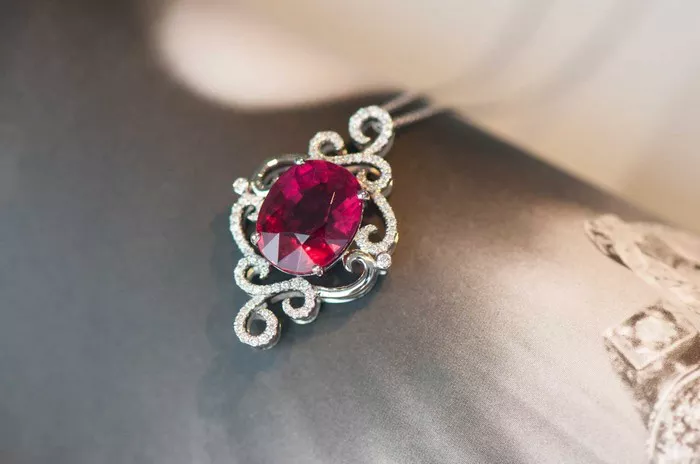Blue tourmaline, a semi-precious gemstone belonging to the boron silicate mineral family, has captivated collectors and jewelry enthusiasts for centuries. Its unique color, ranging from soft sky blue to deep oceanic tones, coupled with its rarity and durability, makes it a highly sought-after gemstone. This article aims to provide a detailed introduction to the reasons for collecting blue tourmaline, exploring its geological origins, aesthetic appeal, investment potential, and cultural significance.
Geological Origins and Rarity
Unique Formation and Occurrence
Blue tourmaline forms under specific geological conditions, primarily in pegmatite deposits and metamorphic rocks. These deposits are often found in regions with a complex geological history, such as Brazil, Madagascar, and parts of the United States. The rarity of blue tourmaline is partially due to its limited occurrence in nature. Unlike more common gemstones like diamonds or sapphires, blue tourmaline mines are relatively small, and high-quality specimens are even scarcer.
Color and Clarity
The color of blue tourmaline is a result of trace elements within the mineral’s crystal structure. Specifically, copper ions are responsible for the gemstone’s blue hue. The intensity and tone of the color can vary, ranging from a light, almost pastel blue to a deep, vivid blue. Clarity is another factor that contributes to blue tourmaline’s rarity. Like many gemstones, blue tourmaline can contain inclusions, such as liquid or gas-filled cavities, which can affect its transparency. High-quality blue tourmaline, with vivid color and good clarity, is therefore particularly rare and valuable.
Aesthetic Appeal and Versatility
Color Variety and Versatility
Blue tourmaline’s color palette offers a wide range of options for jewelry design. From soft, pastel blues that evoke a sense of calm and tranquility to deeper, more vivid blues that convey power and sophistication, blue tourmaline can cater to a variety of tastes and styles. This versatility makes it an excellent choice for a wide range of jewelry pieces, from delicate pendant necklaces to bold cocktail rings.
Hardness and Durability
Blue tourmaline has a hardness of 7 to 7.5 on the Mohs scale, making it relatively durable and suitable for everyday wear. Its hardness ensures that it can withstand scratches and abrasions, maintaining its beauty and value over time. Additionally, blue tourmaline has good toughness, meaning it is resistant to chipping or breaking. These physical properties make blue tourmaline an ideal choice for jewelry that will be worn frequently and exposed to daily wear and tear.
Cut and Polish
The beauty of blue tourmaline is further enhanced by its ability to be cut and polished into a variety of shapes and styles. Skilled gemcutters can maximize the gemstone’s color and clarity by carefully selecting the best cut for each individual piece. Popular cuts for blue tourmaline include rounds, ovals, cushions, and emerald cuts, each of which highlights the gemstone’s unique beauty in different ways. Proper cutting and polishing can also reveal the gemstone’s internal reflections, known as “fire,” adding to its overall appeal.
Investment Potential and Value
Rarity and Scarcity
As mentioned earlier, the rarity and scarcity of blue tourmaline contribute to its investment potential. High-quality specimens are difficult to find, and demand often outstrips supply. This imbalance creates an opportunity for investors to acquire gemstones that are likely to appreciate in value over time.
Market Trends
The gemstone market is influenced by various factors, including economic conditions, fashion trends, and geopolitical events. However, blue tourmaline’s unique attributes and limited availability make it less susceptible to short-term fluctuations in demand. Over the long term, blue tourmaline’s investment potential is likely to be driven by its scarcity and the growing interest in colored gemstones among collectors and jewelry enthusiasts.
Certification and Documentation
To maximize the investment potential of blue tourmaline, it is important to ensure that the gemstone is accompanied by a certificate of authenticity and grading report from a reputable gemological laboratory. These documents provide valuable information about the gemstone’s quality, origin, and treatment history, which can be crucial for determining its value and marketability.
Cultural Significance and Symbolism
Healing Properties
In many cultures, blue tourmaline is believed to have healing properties. Its calming blue color is associated with the throat chakra, which is believed to govern communication, self-expression, and truth. Some people believe that wearing blue tourmaline can help alleviate stress, improve communication skills, and enhance one’s sense of self-worth.
Spiritual Meaning
Blue tourmaline is also believed to have spiritual significance. Its deep, vivid blue hues are often associated with water and the ocean, symbols of life, renewal, and connection to the divine. In some cultures, blue tourmaline is believed to be a protective stone, capable of shielding its wearer from negative energy and promoting inner peace.
Historical and Artistic Significance
Throughout history, blue tourmaline has been featured in a variety of artistic and cultural contexts. From ancient civilizations that used it in religious rituals to modern-day jewelry designers who incorporate it into their collections, blue tourmaline has played a significant role in shaping human culture and aesthetics. Its unique color and versatility have made it a popular choice for artists and craftsmen, who have used it to create stunning works of art that have stood the test of time.
Conclusion
In conclusion, blue tourmaline is a highly sought-after gemstone with a rich history, unique color, and versatile aesthetic appeal. Its rarity, durability, and investment potential make it an excellent choice for collectors and investors. Additionally, its cultural significance and healing properties add to its overall appeal, making it a gemstone that is cherished and admired by people around the world. Whether you are looking for a beautiful piece of jewelry to wear and enjoy or a valuable investment to add to your portfolio, blue tourmaline is a gemstone that is worth considering.
Related topic:
- Is the Price of Black Tourmaline with Gold Higher?
- Why Is Black Tourmaline and Gold a Perfect Match?
- What Are the Collection Values of Black Tourmaline and White Marble?


